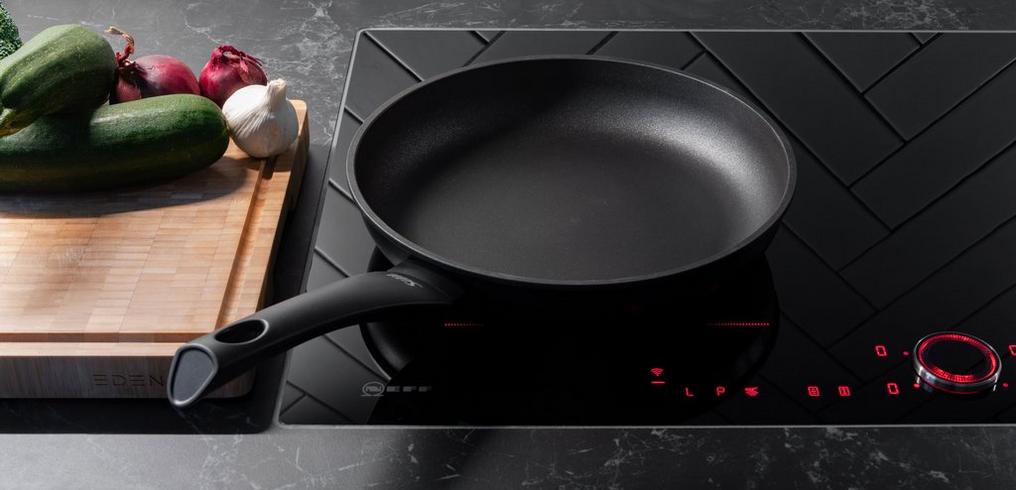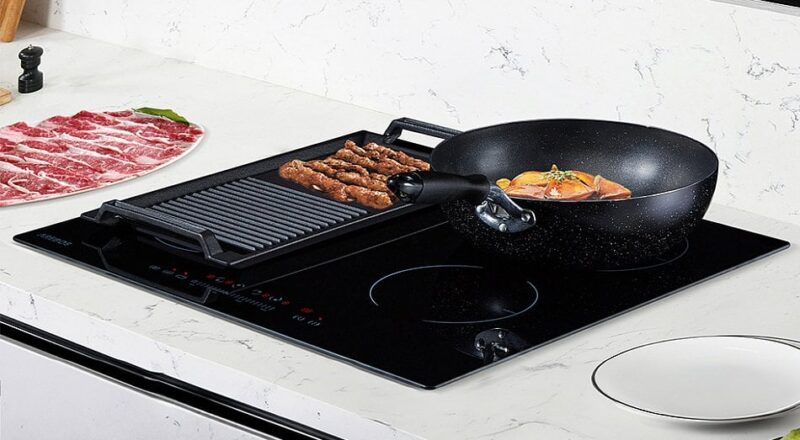Searing meat in cast iron on induction is a technique that combines the traditional charm of cast iron with the modern efficiency of induction cooking. This method is not only popular among professional chefs but also home cooks who appreciate the unique benefits it offers. Whether you’re a seasoned cook or new to the kitchen, understanding this cooking method can elevate your culinary skills.
In this article, we’ll explore why using a cast iron skillet on an induction cooktop is a great choice for searing meat, provide tips for perfect results, and address some common questions about this cooking method. From achieving that perfect crust to ensuring even cooking, you’ll find all the information you need right here.

Why Choose Cast Iron for Searing?
Cast iron skillets have been a staple in kitchens for generations. They are renowned for their heat retention and ability to create a perfect sear on meat. When used on an induction cooktop, the benefits are amplified. Induction cooking provides precise temperature control, allowing you to achieve the ideal sear every time.
Benefits of Cast Iron
One of the primary advantages of using cast iron is its ability to retain heat. This is crucial for searing meat, as it ensures that the surface of the meat reaches a high temperature quickly, creating a flavorful crust. Additionally, cast iron is durable and can last a lifetime with proper care.
Induction Cooking Advantages
Induction cooktops are known for their efficiency. They heat up quickly and provide consistent, even heat, which is essential for cooking meat evenly. Unlike traditional gas or electric stoves, induction cooktops use electromagnetic fields to heat the cookware directly, making them more energy-efficient and safer to use.
Preparing Your Cast Iron Skillet
Before you start searing meat in cast iron on induction, it’s important to prepare your skillet properly. This involves seasoning the skillet to prevent sticking and ensure a smooth cooking surface. Seasoning involves coating the skillet with a thin layer of oil and heating it to create a natural non-stick surface.
Seasoning Your Skillet
To season your cast iron skillet, start by cleaning it thoroughly with hot water and a stiff brush. Avoid using soap, as it can strip the seasoning. Once clean, dry the skillet completely and coat it with a thin layer of vegetable oil. Heat the skillet on your induction cooktop until the oil begins to smoke, then let it cool. Repeat this process several times to build up a strong seasoning.
Steps for Perfect Searing
Achieving a perfect sear on meat requires precision and attention to detail. Here are the steps to follow for the best results:
Heat the Skillet
Place your seasoned cast iron skillet on the induction cooktop and set it to a high heat setting. Allow the skillet to heat up for a few minutes until it reaches the desired temperature.
Prepare the Meat
While the skillet is heating, prepare your meat by patting it dry with paper towels. This removes excess moisture, allowing for a better sear. Season the meat with salt and pepper or your preferred seasoning blend.
Sear the Meat
Once the skillet is hot, place the meat onto the cooking surface. Let it cook undisturbed for a few minutes to form a crust. Resist the urge to move the meat around, as this can prevent a proper sear from forming.
Check for Doneness
After searing one side, use tongs to flip the meat and sear the other side. Check for doneness using a meat thermometer or by cutting into the meat to ensure it’s cooked to your liking.
Common Mistakes to Avoid
When searing meat in cast iron on induction, there are a few common mistakes that can be easily avoided:
Overcrowding the Pan
Overcrowding the skillet can lead to uneven cooking and prevent a proper sear. Be sure to leave enough space between pieces of meat to allow for even heat distribution.
Not Preheating the Skillet
Failing to preheat the skillet can result in sticking and uneven cooking. Always allow the skillet to reach the desired temperature before adding the meat.
Using the Wrong Oil
Choose an oil with a high smoke point, such as vegetable or grapeseed oil, to prevent smoking and burning during the searing process.
Cleaning and Maintaining Your Cast Iron
Proper care and maintenance of your cast iron skillet will ensure it lasts for years to come. After cooking, allow the skillet to cool before cleaning it with warm water and a brush. Avoid using soap, as it can strip the seasoning. Dry the skillet thoroughly and apply a thin layer of oil before storing it.
Handling Stubborn Stains
If your skillet develops stubborn stains, sprinkle coarse salt onto the surface and scrub it with a brush. This acts as a natural abrasive and helps remove stuck-on food without damaging the seasoning.

FAQs
Can I use any cast iron skillet on an induction cooktop?
Yes, most cast iron skillets are compatible with induction cooktops. They contain iron, which is necessary for induction cooking.
What temperature should I use for searing?
For a perfect sear, heat your skillet to medium-high or high heat. This ensures the surface of the meat reaches the optimal temperature for searing.
How do I know when my skillet is hot enough?
A simple way to test the heat is to sprinkle a few drops of water onto the skillet. If they sizzle and evaporate immediately, the skillet is ready for searing.
For more insights on cast iron and induction cooking, visit this external source. To explore more tips on caring for your cast iron, check out this cleaning guide and learn how to ensure even heating on induction cooktops.
This article contains affiliate links. We may earn a commission at no extra cost to you.

